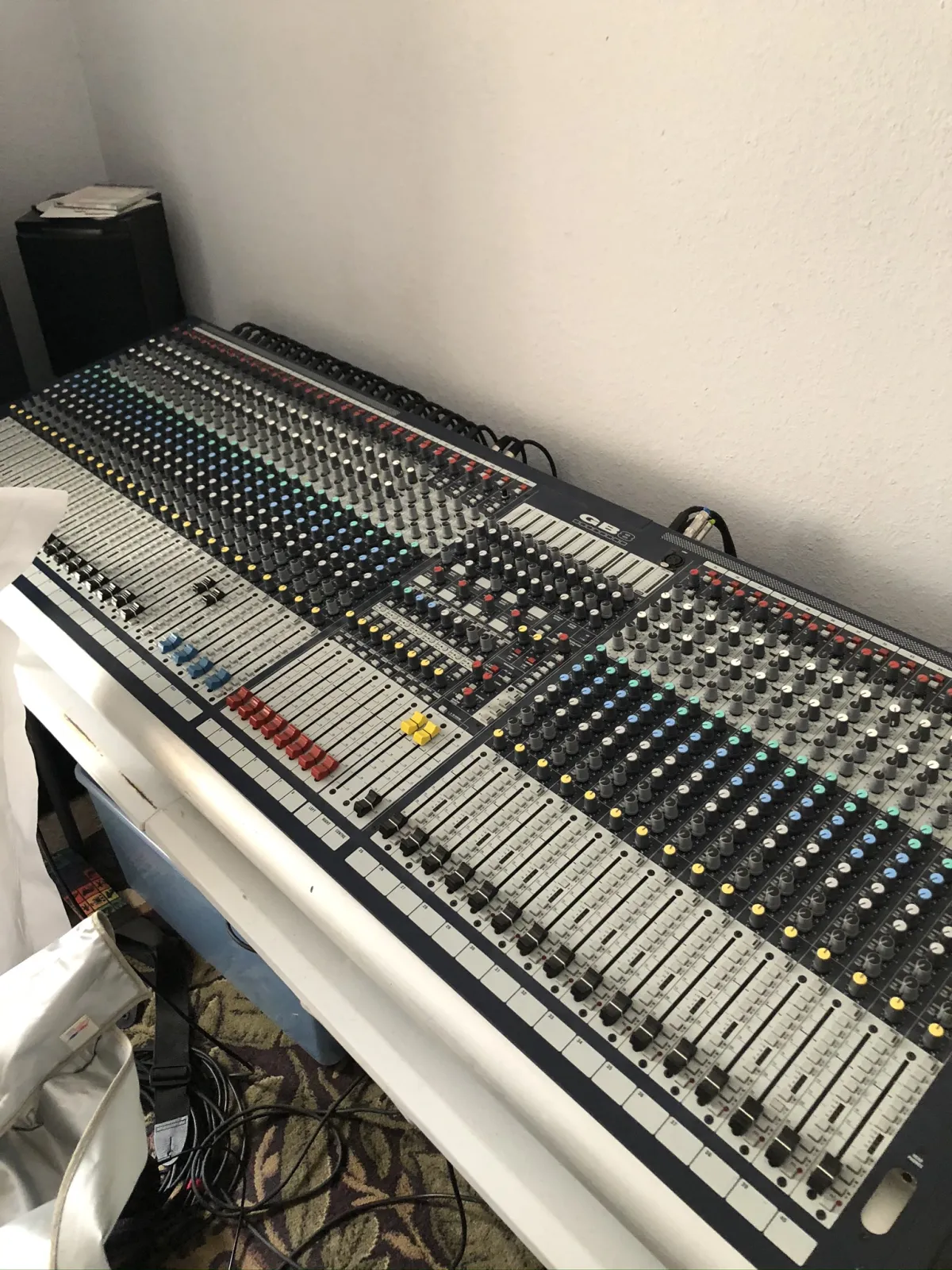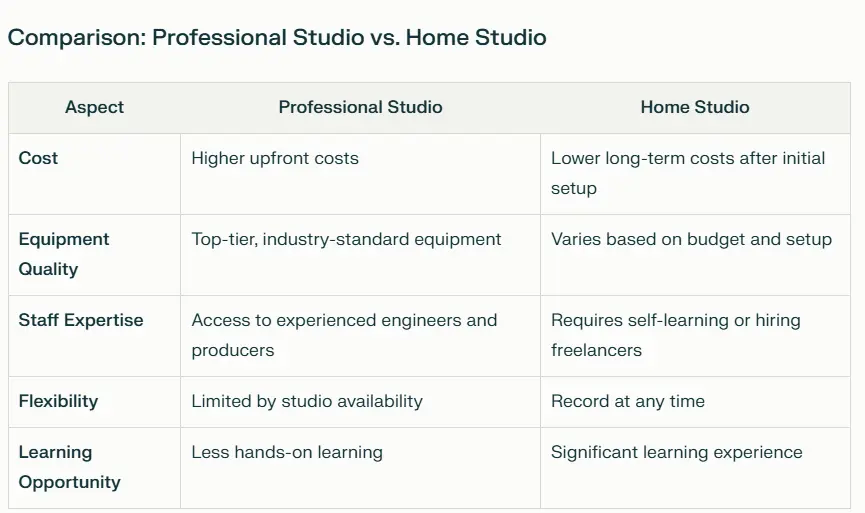We Shall Record: Home Recording Essentials for Sonic Excellence
The document details the challenges and techniques in music recording, mixing, and mastering using various tools.

Potpourri of Sounds (Vol. 1) Sound Recording Technique Steps: How I Improved My Mixing and Mastering Techniques 110% in Six Months Method of Recording Techniques Available Common Mistakes in the Preparation Phase Studio One 6 Professional: Mixing and Mastering Software Positioning Online Course by Dave Vignola: Home Recording Made Easy Conclusion
Potpourri of Sounds (Vol. 1) Sound Recording Technique Steps:
The Triumphs and Tribulations of Music Mixing and Mastering
My dear fellow citizens,
In the grand arena of musical creation, we find ourselves engaged in a most noble pursuit—the art of recording, in fact perfecting the art of music mix and mastering. Let us not underestimate the gravity of this endeavor, for it is through these sonic chronicles that we shall be remembered by generations to come.
I stand before you today to speak of the trials and troubles faced in the production of "Potpourri of Sounds (Vol 1)." This was no mere trifle, I assure you. We battled against the very limits of technology and human skill, much as our brave boys fought on the beaches of Normandy.
Our arsenal consisted of Studio One, a digital weapon of considerable might. Yet, like the Spitfire in unskilled hands, it proved a challenge to master. We found ourselves outmatched, our recordings falling short of the mark.
This is our finest hour in audio production. But did we surrender? Did we raise the white flag of average? Never!
We sought knowledge; we pursued excellence with the tenacity of bulldogs. We enlisted the aid of one Dave Vignola, a general in the army of audio engineering, whose wisdom proved invaluable in our campaign.
Through his guidance, we learned to wield our digital arms with the precision of seasoned veterans. We mastered the art of balance, the science of adjustment, and the alchemy of effects. We emerged from this crucible of learning, stronger and more capable than ever before.
Let it be known that the path to audio mastery is fraught with peril. It demands sacrifice, perseverance, and an unwavering commitment to quality. But I say to you, my friends, that the rewards are worth every moment of struggle.
We shall mix on the beaches; we shall master in the fields and in the streets; we shall never surrender to poor audio! And in the end, when victory is ours, we shall have created something truly worthy of the ages.
This is our finest hour in audio production. Let us march forward, armed with knowledge and determination... to create sounds that will echo through eternity!
(AI paraphrased in the style of Sir Winston Churchill)
- Prepare music that you know you will be able to record.
- Use quality recording equipment.
- Spend time learning how to mix and master.
- Upload the mastered version to a streaming platform.
How I Improved My Mixing and Mastering Techniques 110% in Six Months
"Potpourri of Sounds (Vol.1)" by Clark Clifford was recorded over a period of several months. I recorded in a home studio using Studio One software. Pascoal Meirelles’ drums were recorded in a studio in Rio De Janiero, and .wav files, that had been emailed, were added to the recordings. I recorded all electric cello and bass guitar tracks "straight in" through a Nitewalker Bass Guitar Tube Preamp, effects processor, Soundcraft GB-8 sound board, and into Studio One via an interface.
Originally, Pascoal recorded three different takes for the Song “Old Friend (Part 3)”. These tracks were the basis for the “Old Friend (Part 2)” composition. I recorded the horns for "Old Friend (Part 2)" from a laptop using Presonus Notion software.
I recorded each horn individually into a line level variation of a Nitewalker Bass Guitar Tube Preamp, then into the Soundcraft GB-8 sound board and Studio One through an interface.
Preparing music for recording involves several key steps, including budgeting, ensuring the dependability of collaborators, and selecting the appropriate recording techniques. Additionally, you must decide between using a professional studio or a home studio for your recording needs. Here’s a detailed guide to help you through this process:
Budgeting
Creating a budget is essential to ensure you have the necessary resources to complete your recording project. Here are the key components to consider:
- Studio Time: Professional studios can range from $300 to $3000 per day. Setting up a home studio requires an initial investment but can save you money over time.
- Musicians: Musicians: Hiring skilled musicians remains important, though costs may vary. Invest in talent to achieve high-quality recordings.
- Audio Engineer: A professional audio engineer can cost between $500 and $700 per day. If you’re recording at home, you might need to invest time in learning basic engineering skills.
- Equipment: To set up a home studio, you need a computer, digital audio workstation (DAW), audio interface, microphones, and headphones or monitors. This setup can cost anywhere from $500 to several thousand dollars. The computer used in Recording “Potpourri of Sounds (VOL. 1)” is a Lenovo M910T with maximum upgraded memory. Set your computer to "High Performance" mode for optimal recording.
Here is a guide: How to Optimize Windows 10 for Music Production (musicproductionnerds.com)
I bought and repaired a Soundcraft GB-8 sound board for $50 to use on "Potpourri of Sounds, Vol 1".
It was not functioning at the time of purchase. I replaced about 300 bad capacitors in the sound board.
I used an ESR meter to identify the faulty capacitors. With clean contacts and new capacitors it performed perfectly. Here is photo of the rebuilt board:

Dependability of Collaborators
The success of your recording project heavily relies on the dependability of your collaborators:
- Pre-Production: Engage in pre-production to refine your songs. This involves recording live demos and getting feedback from trusted sources or a producer.
- Practice: Ensure that all musicians are well-rehearsed. The more prepared they are, the smoother the recording sessions will be.
- Producer: A good producer manages logistics, keeps the project on track, and provides a clear vision for the final product.
Recording, Mix and Mastering Techniques Available
Professional Studio
Advantages:
- High-Quality Equipment: Professional studios have top-tier equipment and acoustically treated rooms, ensuring high-quality recordings.
- Experienced Staff: Access to experienced engineers and producers who can provide valuable insights and technical expertise.
- Time Efficiency: Sessions are typically more efficient due to the professional environment and staff.
Disadvantages:
- Cost: Higher upfront costs can be a barrier, especially for independent artists or those with limited budgets.
- Scheduling: Availability can be an issue, requiring advance booking and potentially limiting flexibility.
Home Studio
Advantages:
- Cost-Effective: After the initial investment in equipment, recording at home can be much cheaper.
- Flexibility: You can record at any time, allowing for greater creative freedom and less pressure.
- Learning Opportunity: Building and using a home studio can teach you valuable skills in music production.
Disadvantages:
- Initial Investment: Setting up a home studio requires an initial investment in equipment and possibly acoustic treatment.
- Learning Curve: Expect a steep learning curve when mastering recording techniques and equipment.
- Quality: Home studios may not match the acoustic quality and equipment standards of professional studios.
Recording Techniques
Regardless of where you record, the following techniques are crucial:
- Layering: Start with recording the drums and edit them before adding other instruments. This ensures a solid rhythmic foundation.
- Sectional Recording: Record complex instrument parts in sections (e.g., kick and snare separately from toms and cymbals) for more flexibility during mixing.
- Monitoring and Adjustments: Continuously monitor the recordings and make necessary adjustments to ensure the best possible sound quality.

Plan your budget carefully, ensure reliable collaborators, and use effective recording techniques to prepare music for a successful recording session in any studio.
During the preparation phase for recording music, artists often make common mistakes that can significantly impact the quality and efficiency of the process. Here are some of the most frequent errors and how to avoid them:
Common Mistakes in the Preparation Phase
I. Inadequate Preparation
Description: One of the most critical mistakes is showing up to the recording studio unprepared. This can lead to wasted time, increased costs, and subpar results.
Avoidance Strategies:
- Song Structure: Create a clear song structure with well-defined sections, including verses, choruses, bridges, and intros/outros.
- Key and Tempo: Know the exact key and tempo of each song and communicate this to the studio engineer in advance.
- Equipment: Check and tune all instruments before recording to ensure they're in good condition.
II. Lack of Pre-Production
Description: Skipping pre-production can result in sloppy recordings and missed opportunities for creative enhancements.
Avoidance Strategies:
- Demo Recordings: Create demo recordings to assess the structure, arrangement, and overall sound of your songs.
- Pre-Production Meetings: Schedule meetings with bandmates, producers, and engineers to discuss creative ideas, sonic goals, and recording strategies.
- Instrument and Tone Selection: Try different instruments and tones during pre-production to find the right sound for each song.
III. Poor Time Management
Description: Ineffective time management can lead to rushed performances, compromised quality, and increased expenses.
Avoidance Strategies:
- Set Realistic Deadlines: Work with your producer and engineer to set realistic deadlines for each phase of the recording process.
- Create a Schedule: Develop a detailed schedule that outlines the order of recording, breaks, and any additional tasks.
- Warm-Up and Rest: Prioritize warm-up sessions before recording and take regular breaks to rest and refresh.
IV. Improper Studio Environment
Description: Overlooking the studio environment can result in poor sound quality and weakened performances.
Avoidance Strategies:
- Proper Acoustics: Ensure the studio has the right acoustic treatment to reduce unwanted reflections and guarantee accurate monitoring.
- Microphone Placement: Experiment with different microphone positions to capture the best sound for each instrument or vocal.
- Minimize Ambient Noise: Reduce sources of background noise, such as air conditioning or outside traffic.
V. Lack of Communication
Description: Failing to communicate effectively with the recording engineer or producer can lead to misunderstandings and unsatisfactory results.
Avoidance Strategies:
VI. Unrealistic Expectations
- Clear Vision: Have a clear vision of what you want to achieve and communicate this to your team.
- Provide Reference Tracks: Share references of other songs or sounds that you like to help the engineer understand your desired outcome. This is one of the most important aspects today in the recording process. A good reference track can make or break the outcome of the final sound of the mix and mastering. For “Potpourri of Sounds (Vol. 1)” the cello tracks were mixed with Pablo Casals’ recording of the Bach Suites as a reference track.
Description: Having unrealistic expectations about the recording process can lead to frustration and disappointment.
Avoidance Strategies:
- Set Achievable Goals: Understand that achieving a polished final product takes time and multiple takes.
- Focus on Progress: Concentrate on making continuous improvements rather than expecting perfection on the first try.
Avoid these common mistakes and plan your preparation phase carefully to ensure a smoother recording process and a higher-quality final product.
Prepare thoroughly for success, whether you record in a professional or home studio.
Studio One 6 Professional: Mixing and Mastering Software
Studio One 6 Professional by PreSonus is a comprehensive Digital Audio Workstation (DAW) designed for both mixing and mastering. It provides a range of tools and features that meet the needs of audio engineers, producers, and musicians creating professional-quality recordings.
Features of Studio One 6 Professional
- Integrated Mixing and Mastering: Studio One 6 Professional includes a dedicated Mastering Page, allowing users to transition seamlessly from mixing to mastering within the same project.
- High-Resolution Audio: The software supports 64-bit floating-point WAV format, providing the highest-resolution audio production and mastering capabilities. This ensures maximum recording and processing precision, which is crucial for achieving professional sound quality.
- Advanced Audio Editing: Studio One offers non-destructive editing, real-time time-stretching, transient detection, audio quantization, and more. These tools allow users to experiment with sound confidently and make precise adjustments to their recordings.
- User-Friendly Interface: The DAW features an intuitive drag-and-drop functionality, customizable keyboard shortcuts, and efficient workflow. These features make it easy to organize sessions, apply effects, and manage tracks.
Challenges with "Potpourri of Sounds (Vol. 1)"
Despite Studio One 6 Professional's powerful capabilities, achieving acceptable sound quality for the "Potpourri of Sounds (Vol." project proved challenging.
Despite numerous attempts, I couldn't achieve the desired sound quality when mixing and mastering the album. This led to the decision to seek further education in mixing and mastering techniques.
Positioning
In the crowded marketplace of music production, positioning your home recording studio is key. Just as Avis found success by admitting they were No. 2, home studios can carve out their niche by embracing their unique advantages.
The battle for the aspiring musician's mind isn't about having the fanciest home recording mixing desk or the best home recording software. It's about occupying a distinct position that resonates with your target audience.
When considering home recording studio vs professional studio, remember that being first in a category is often more powerful than being "better." Position your home setup as the go-to choice for indie artists or budget-conscious musicians.
Your home audio recording studio setup doesn't need to compete directly with professional studios. Instead, find the "hole" in the market. Perhaps you offer a more intimate, comfortable environment for vocalists or specialize in a particular genre.
With home audio recording studio equipment becoming more affordable and powerful, the key is to differentiate. Don't try to be all things to all artists. Focus on a specific niche and own it in the minds of your potential clients.
As a music producer working from home, your positioning should emphasize your unique strengths. Maybe you're the fastest at turning around projects or have a signature sound in a particular style.
Remember, it's not enough to sound great. You need to position your home studio in a way that makes it the clear, logical choice for your target market. By following these principles, you can create a powerful position for your home recording business in the minds of musicians and artists.
Online Course by Dave Vignola: Home Recording Made Easy
To improve mixing and mastering skills for the project, I took Dave Vignola's online course "Home Recording Made Easy." Dave Vignola, known for his audio engineering expertise, uses an SSL Origin mixing desk in his studio.
His course teaches how to use a computer to achieve a sound closely resembling recordings mixed with the SSL Origin desk.
Key Learnings from the Course
- SSL Origin Techniques: The course covers techniques to emulate the SSL Origin mixing desk sound using digital tools.
- Mixing Fundamentals: Focusing on balancing levels, panning, EQ, and applying effects to create a cohesive mix: These are fundamental skills that are crucial for achieving a professional sound. The Slate Digital plugins discussed in the course were great for this. They offer a 30 day free trial for the entire package, which is available for $19.95/mo. if you subscribe for a year.
- Mastering Essentials: The course also delves into the mastering process, which includes finalizing the track to ensure it sounds cohesive and is ready for distribution. This involves tasks such as peak limiting, trimming, and applying final EQ adjustments. I took Dave’s advice and bought the Izotope mastering plugin package. It helped some, but nowhere near as much as the Slate Digital package. The final mix needed minimal improvements during mastering.
Conclusion
Alright, cats, let's rap up about the groovy world of mixing and mastering. It's like cooking up a sonic feast, and you're the chef, baby!
Mixing and mastering, they're two sides of the same coin, but don't get it twisted - they're different beasts. Mixing is like arranging all the instruments in your sonic orchestra. You're balancing levels, panning sounds, and adding effects to make everything gel. Mastering? That's the final polish, making sure your track sounds killer on any system, from a tinny car radio to a thumping club system. This mastering and mixing difference is crucial to understand in the music industry.
Now, if you're looking to get hip to this scene, there are some righteous mixing and mastering courses online. Dave Vignola's Home Recording Made Easy? That's the real deal, man. It's like having a seasoned mix engineer whispering sweet audio secrets in your ear. You'll learn to make your computer sing like an SSL Origin mixing desk - that's some high-end mojo right there.
For the home studio cats, you don't need a fancy home music recording studio to lay down some groovy tracks. Start with a decent computer, a DAW like Studio One 6 Professional or Ableton Live, and good studio monitors.
But remember, it's not about the gear, it's about the ear. Train your ears to hear the subtleties and nuances that distinguish professional recordings.
Speaking of mixing and mastering software, there's a whole smorgasbord out there. Studio One, Pro Tools, Logic - they're all tools in your sonic toolbox. But don't forget about those juicy plugins. Slate Digital? That's some tasty stuff. And Izotope for mastering? It's like having a PhD in audio polish at your fingertips.
But here's the kicker - all the fancy equipment for a home recording studio won't save you if you don't know how to use it. That's why mixing and mastering lessons are worth their weight in gold records. Learn to differentiate between a high shelf and a low cut, tame pesky peaks, and make your mix sound wider than the Grand Canyon.
For you bedroom home recording studio producers out there, don't sweat it if you can't afford a pro studio. Create magic in your own sonic sanctuary with acoustic treatment (even DIY solutions work well), good monitors, and a decent mic with pop filters.
It's not about the size of the room, it's about the size of your creativity, dig?
Remember, sound mixing and mastering is an art form. It takes time, patience, and a whole lotta love. But when you nail it? Man, there's no feeling like it. You'll be grooving to your own tunes, marveling at how good they sound on every system you try.
Keep pushing faders, tweaking knobs, and trusting your ears, whether you're recording in a professional studio or crafting beats at home. Because at the end of the day, if it sounds good, it is good. Now go make some noise, you crazy cats!
Dive deeper into this world by exploring mixing and mastering programs or using a mixing and mastering cheat sheet. Learn how to record vocals, mix instruments and vocals, and even tackle stem mixing and mastering. Create professional, industry-standard recordings with the right home studio setup and sound engineering knowledge.
Don't forget about post production and how to record music like an acoustic guitar. Transform your bedroom into a music production powerhouse using various home recording studio ideas and top-quality recording software. Create magic at home with the right equipment and essentials, regardless of the ongoing debate between home and professional studios.
So fire up that audio engine and let's make some music!
How did I do it?
I banged my head on a wall for several months and then….
I took these specific courses: EQ, Compression, Mixing 1, Mixing 2, and Mastering. Find these resources at www.mixingmadeeasy.net.
Believe me. It works!
Don’t believe me? Listen to it on Bandcamp here.
If you have questions about the "Potpourri of Sounds (Vol. 1)" mixing and mastering technique please leave them in the comments below.
Join Our Mailing List
We're excited about the Gastrorejuvenator Crowdfunding Campaign, and Invite You to Become a Part of It! Join Now
Free Annual Guide
Emerging Trends in the Health and Nutrition Sector 2024: The Ultimate Guide
Click for Free Annual Guide
Discover the latest health and nutrition trends shaping 2024 in our comprehensive guide. From personalized nutrition to sustainable eating, explore the innovations transforming wellness. Click to unlock expert insights and stay ahead of the curve in health and nutrition. Learn More! Top of page



